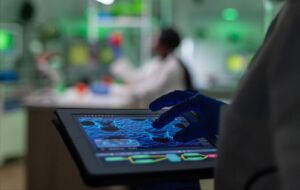Geneticists use a map to trace the location of a particular gene on a chromosome. There are two maps to assess the location of the gene- cytogenetic mapping and molecular mapping. The cytogenetic mapping determines the location of the gene based on a distinctive pattern of bands created when chromosomes are stained with certain chemicals.
The molecular map describes the location of genes on the chromosome more precisely. Molecular location is based on the sequence of nucleotides that make up the chromosome.
Cytogenetic location:
Geneticists use standardized methods to describe the cytogenetic location of genes.
A combination of numbers and letters usually provide a gene’s address on a chromosome. The address is made up of the following parts:
- Chromosome number on which the gene resides: Every chromosome is designated a chromosome number (from 1 through 22: autosomes). The first number or letter used to describe a gene’s location represents the chromosome. Sex chromosomes are represented by X (female) or Y (male).
- Arm of the Chromosome: Each arm has two sections, short arm and long arm. Shorter arm is known to be p, and the longer arm is called q. The chromosome arm is the second part of the gene’s address. Sometimes followed by decimal point that indicate the sub bands within a light or dark region.
- The position of the gene on the p or q arm: Gene locations are based on the characteristic pattern of light and dark bands that appear when chromosomes are colored in a particular way. Positions are usually represented by two digits (representing a region and a band).
- Sometimes, the abbreviations “cen” or “ter” are also used to describe a gene’s cytogenetic location. “Cen” indicates that the gene is very close to the centromere (structure the holds the two arms of the chromosomes- sister chromatids).
Example: CFTR gene is known to be located on the long arm of chromosome 7: then the gene address would be written as 7q31.2
Molecular location:
The Human Genome Project, an international research effort completed in 2003, determined the sequence of base pairs for each human chromosome. This sequence information allows researchers to provide a more specific address than the cytogenetic mapping . A gene’s molecular address indicates the location of that gene in base pairs. It describes the exact location of the gene on the chromosome and gives the size of the gene.




